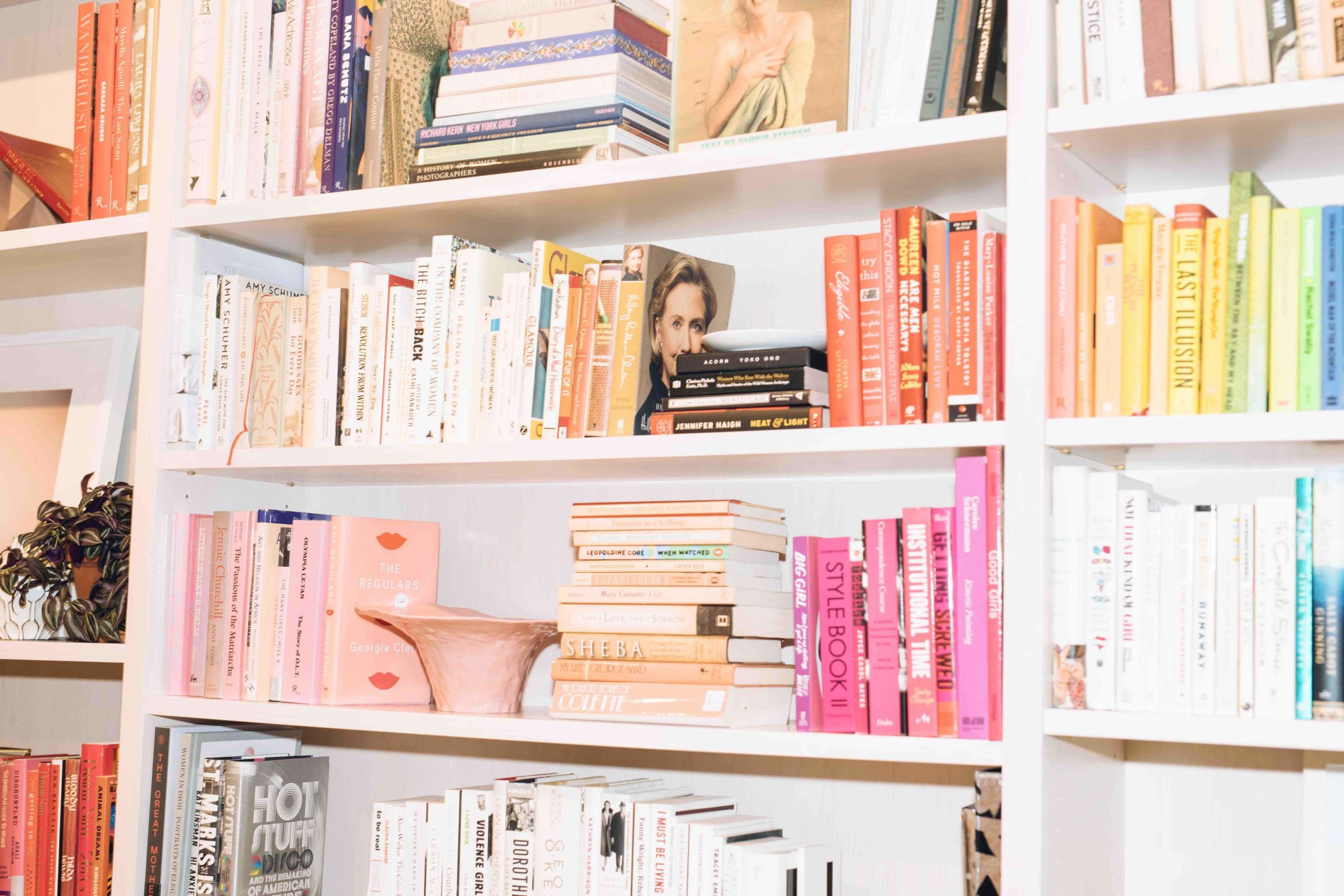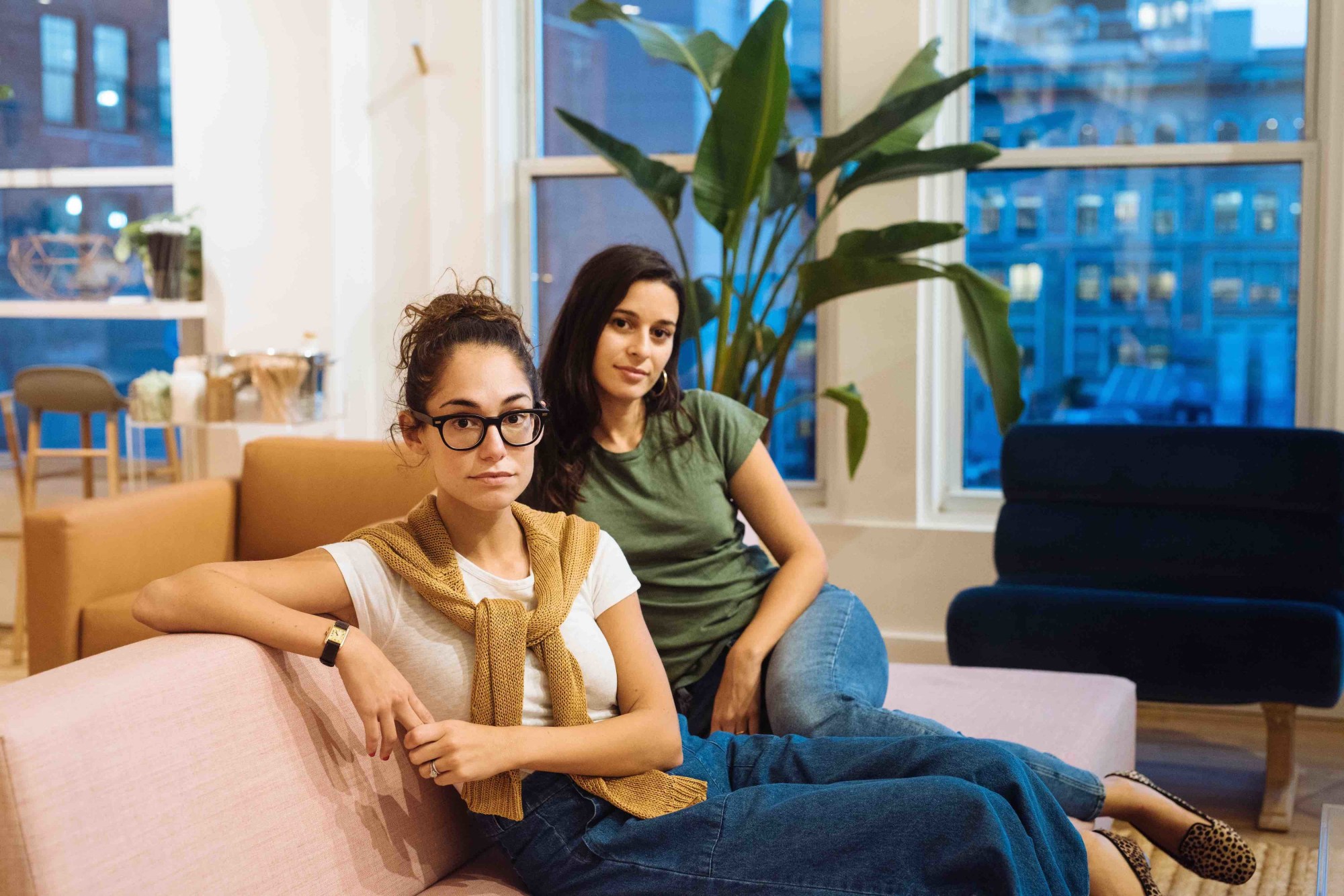Some things you’ll find when you enter The Wing, a pink-accented penthouse a few blocks north of New York’s Union Square: stacks and stacks of color-coordinated books by and/or about women; tea and snacks brewed and baked by cult female-run downtown restaurant Dimes; a powder room, with illustrated wallpaper by Brooklyn artist Joana Avillez; a lactation room; tampons by LOLA, a new, women-led tampon startup.
On any given day in the space, you might meet: a robotics engineer; the chief of staff to Governor Andrew Cuomo; the novelist Sloane Crosley; photographer Petra Collins; Lena Dunham; the members of an all-female biker club, who are coming by next month — with a motorcycle — to give a talk to The Wing’s members.
Men you may meet: the occasional UPS deliveryman, as I do on the day I visit.
“Every time a man walks in we say, ‘Man on the land!'” jokes The Wing’s co-founder Audrey Gelman, sitting on a Scandinavian dove-grey sofa, as everyone waits for the postman to leave. “The other day,” she remembers, “there was a guy from ConEd, and I was like, ‘He’s screaming!'” Then, she realized, “No, he’s just talking. I’m just not used to hearing a man’s voice.”
The Wing is a definitively female space, designed by Gelman and co-founder Lauren Kassan as a homebase for women to regroup and connect with one another. You can book a blow dry appointment or take a phone call, have a shower or hold a meeting. “We want it to be a place women can use to sort of prepare for battle,” says Audrey. “Women who are thinking about running for office. Women who are about to take a big risk and need to tap into a network of women to support them.”
In other words, The Wing is exactly the sort of place Audrey and Lauren would have benefited from while they were trying to create The Wing. “For two women under 30, raising capital is challenging,” says Audrey, who quit her job as a successful political public relations consultant to start The Wing. She and Lauren (formerly the Director of Studio Empowerment at ClassPass) spent months finding and rallying potential investors. “It was trying to break into networks that we didn’t have access to, and finding evangelists, people who really championed the idea,” Audrey explains. “More than half our investors are women, and it was a challenge to find those women. We did really find that there were men who just didn’t get the idea.”

“There’s no footprint or formula for what we’re doing here,” continues Lauren, who handles the operations side of the company, while Audrey focuses on branding and community. “It’s a totally new concept, which makes it amazing and original, and so awesome to see come to life. But there was no ‘here’s how you do it.'”
If The Wing has any precedents, they are the stuffy gentlemen’s clubs to which the space is in direct opposition and the American women’s clubs that formed in the late 1900s, reached their peak in the 1930s, and eventually faded out after the Second World War.
“English social club design is very dark,” says Audrey. “There’s a lot of oak and dark leather. Chesterfield sofas. Taxidermy! We were like, ‘How do we take the layout of a place like that but do it with a totally different design approach that feels airy and feminine but not saccharine and girly?'” For inspiration, she pictured a young Danish artist whose life and interiors you stalk on Instagram, rather than monocled tobacco-smoked British men.
When it came to adapting the model of earlier women’s clubs for 2016, Audrey and Lauren enlisted Alexis Coe, a historian and writer, as a consultant. Alexis had heard about the project through a mutual friend and offered to help. “The way some people garden or knit, I collect subjects I hope one day to be able to better research,” Alexis tells me over the phone. Women’s clubs are one of those passions, and a subject about which there is little recorded history. She presented Audrey and Lauren with “a couple of hundred pages of research.”
“It was really transformative for the idea to learn about the history and all the amazing things that came out of the women’s club movement,” says Audrey, “And how it faded away and was absent from second- and third-wave feminism. How powerful it had been during its time.”
In American pioneer communities in the late 1800s, groups of women organized to help create infrastructure in newly settled areas. They laid roads and founded schools, libraries, and healthcare institutions. By the 1930s, there were over 600 women’s clubs in New York alone. And while the movement had dissolved almost completely by the 1970s, when women were increasingly entering the mainstream workforce, Alexis points out the importance of women-only groups to the women’s liberation movement. There was Jane, the underground abortion network that operated in Chicago from 1969 to 1973. And the Boston Women’s Health Collective whose members wrote the boundary-breaking Our Bodies Ourselves. During her research, Alexis found a quote from a 1922 speech by Eleanor Roosevelt, which she says resonates when she thinks about The Wing: “Women are by nature progressive.”
Today, she says, “There’s an influx of female entrepreneurs and women who are cultivating their identities in ways that are impatient for the world to catch up.” She sees The Wing as a space for that identity formation to happen. That morning she’d taken a shower there after a yoga class, then returned later in the day to work on a writing project.
Last week, The Wing organized a phone bank and a viewing party for the third presidential debate in association with the Hillary Clinton campaign. “It’s a coincidence,” Audrey says, that the club opened its doors during the year in which the US might elect its first woman president. “But also, it is 100 years after the women’s club movement was really in full force. And roughly 100 years since women won the right to vote in this country,” she adds.
After our interview, I sit at a small round terrazzo table inlaid with The Wing’s brass W logo, to do some work. Three hours later I wonder why I’ve been able to get so much done. Maybe it was the very comfortable leather banquette. Maybe it was the bottomless lime-infused water. Or maybe it was the fact that the only man’s voice I heard for three hour’s was Jay Z’s, during a rare, rapped, verse-long intrusion into The Wing’s otherwise all-woman playlist.
Credits
Text Alice Newell-Hanson
Photography Katie McCurdy
